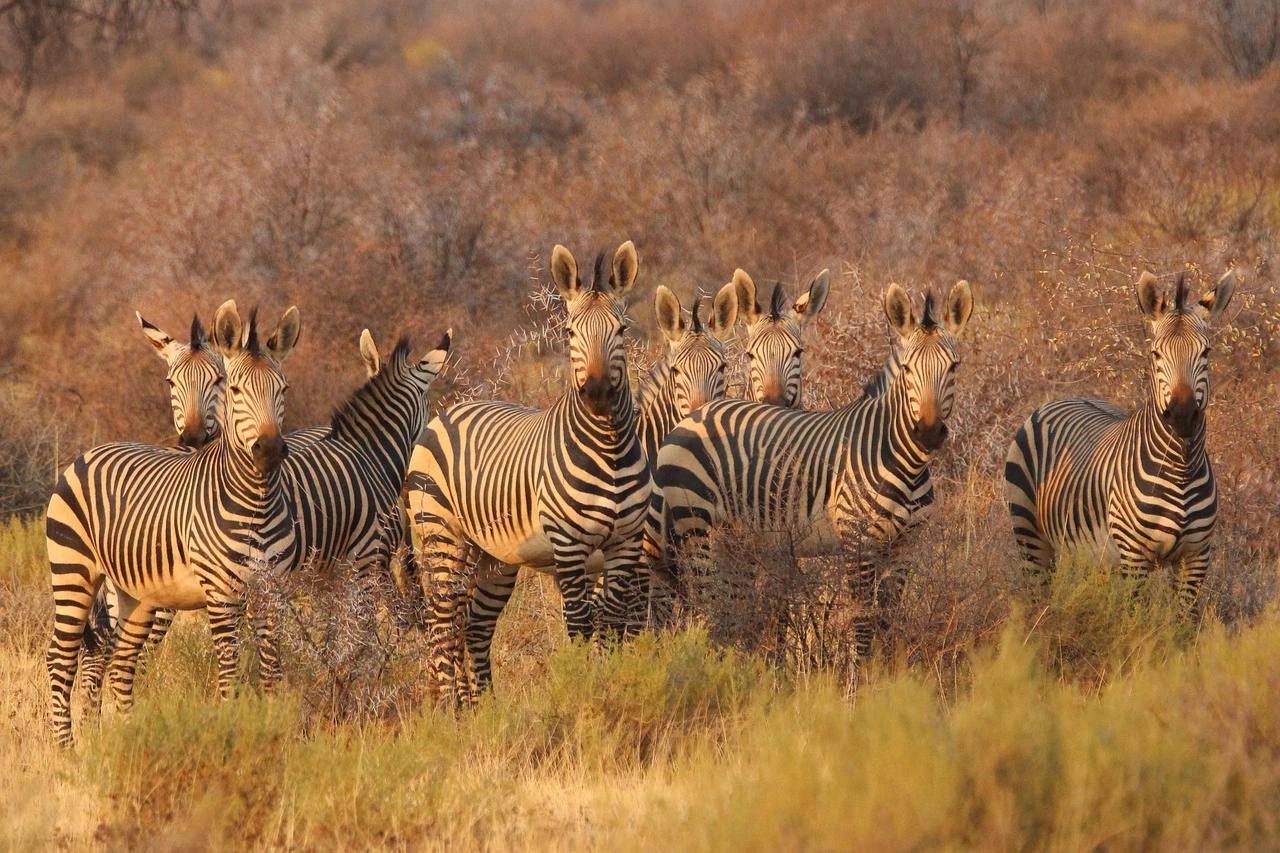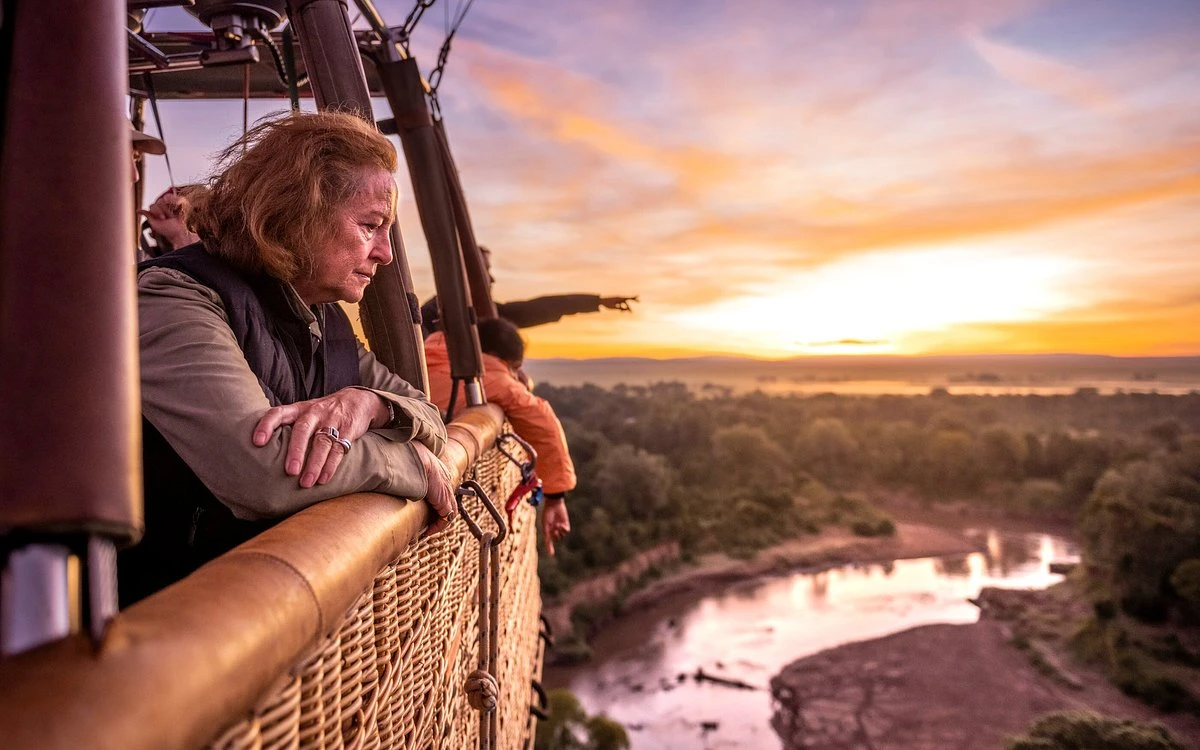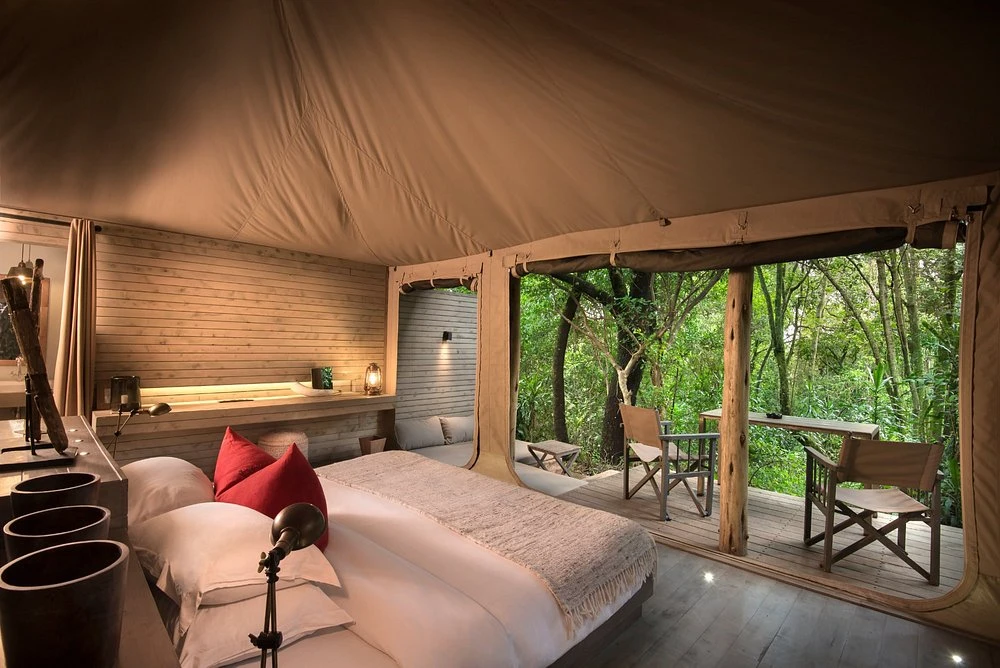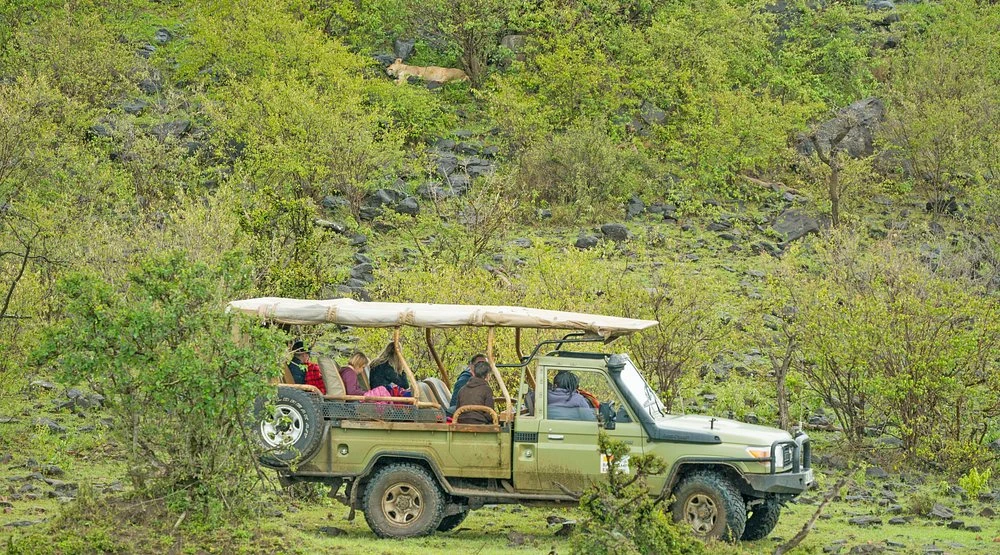Explore the Wonders of Masai Mara
Located in southwest Kenya, Masai Mara is one of the world’s most renowned wildlife destinations known for its breathtaking landscapes and diverse wildlife. It is a large national game reserve situated in Narok County, Kenya. As a part of the greater Maasai Mara ecosystem, it forms a continuous stretch with Tanzania’s Serengeti National Park, creating a perfect backdrop for the annual wildebeest migration.
The reserve is named after the Maasai people, who are the ancestral inhabitants of the area, and the River Mara, which runs through it. The major rivers in the reserve include the Mara River, Sand River, and Talek River. The word ‘Mara’ means ‘spotted’ in the local Maasai language, a reference to the scattered trees and shrubs that dot the Masai Mara landscape.
Your Maasai Mara Adventure Awaits!
Want to see amazing wildlife and scenery? Masaimarapackages.com, owned by ajkenyasafaris.com, is your way in. We are located at Greec Tower, 3rd Floor, Doors T3/F7 & T3/F8 in Ruiru, Kenya. Don’t just dream it, live it!
Get in touch to plan your perfect getaway:
Email Us At:
Call/WhatsApp Us at:
- +254 748 258 880
- +254 704 532 105
- +254 719 222 430
Follow Us Online!:
Book your Maasai Mara safari now!
The Masai Mara Landscape
The Maasai Mara ecosystem is a unique and delicate environment that requires careful conservation and management. It forms part of the Greater Maasai Mara Ecosystem, a protected area that includes the Maasai Mara National Park and the surrounding conservancies.
The terrain of the reserve is primarily open grassland with seasonal river leaves. The park comprises a number of conservancies and group ranches bordering the main reserve, which play a crucial role in wildlife conservation and community engagement. The Mara Conservancy implements successful conservation efforts in the Reserve.
Masai Mara Safari: What is the Maasai Mara Famous For?

The Maasai Mara National Park is famous for its dramatic river crossings during the Great Migration, where millions of wildebeest, zebras and antelopes cross the Mara River in search of greener pastures.
This natural spectacle attracts tourists from all over the world. During the Great Migration, over a million herds moved north into the Mara from Serengeti National Park, between July and mid-September. The Migration is one of the most incredible natural events in the world, with 1,300,000 blue wildebeest, 500,000 Thomson’s gazelles, 97,000 topi, 18,000 common elands, 200,000 Grant’s zebras.
The Maasai Mara is also famous for its big cats, lions and cheetahs, making it one of Africa’s top safari destinations. It was also the location for the popular BBC wildlife documentary series Big Cat Diary which followed the lives of the Mara’s lions, cheetahs and leopards.
The Mara is home to all the Big Five (elephants, leopards, rhinos, buffaloes and lions) and other iconic African wildlife like giraffes, zebras, hippos and cheetahs, often referred to as the Big Nine.
Some migration tips from Mr. Solomon: Mr. Solomon, one of our senior safari guides, recommends booking a migration safari at the end of July to the end of August. He continues to say that over the years, the wildebeests have been crossing the Mara River in large numbers during this time. To ensure you get the best accommodation, he continues to say that you should book your safari at least 9 months in advance. You are assured of getting quality accommodations like Mara Crossing Camp, Entim Main Camp, Entim Private Wing, Mara Eden Safari Camp and Malaika Camp.
When is the Best Month for a Masai Mara Safari?
The best time for a Masai Mara safari is June to October, during the dry season when the Migration is at its peak.
During these months the wildlife viewing is spectacular and the chances of seeing river crossings and the Big Cats are high. However the reserve’s diverse fauna and flora offer great game viewing all year round.
The Masai Mara has a semi-arid climate with bi-annual rains which also influence wildlife movements. The long rains in Masai Mara last for about 6-8 weeks in April and May and shape the ecosystem and wildlife behaviour.
The short rains are in November and December and last for about 4 weeks. The Masai Mara is one of the most famous wildlife destinations in the world.
Going on a Masai Mara Safari

A Masai Mara safari is a once in a lifetime experience. The reserve has various safari activities; game drives, hot air balloon safaris and walking safaris.
Photographic safaris are also available in the Mara for wildlife photography enthusiasts to capture amazing images of the reserve’s diverse wildlife. The conservancies around the national park offer a more exclusive safari experience, focused on wildlife conservation and benefiting local communities. The Mara is one of the world’s best wildlife destinations so the safari experience is even more special.
Booking Your Masai Mara Travel Packages
Getting to Maasai Mara is easy, with regular flights to Nairobi, Kenya’s capital. From Nairobi you can choose:
- Flying Safaris: Go for a flying safari to Maasai Mara from Nairobi for a quicker and more scenic journey to airstrips within or near the reserve. This saves time and offers stunning views.
- Road Safaris: Take a more adventurous journey with a road transfer and see more of Kenya’s countryside. This option is generally more affordable but takes about 4-6 hours depending on traffic.
Consider the best time for a Maasai Mara safari according to your interests:
- July to October: This is generally the best time to see the Wildebeest Migration in the Mara.
- January to February: Good general game viewing with fewer crowds.
- The rainy seasons (April-May and November-December) can be great for scenery and lower prices but some areas might be inaccessible.
Considering flying to Masai Mara? As a professional tour consultant at Ajkenyasafaris.com, I have always recommended our guests to consider a road trip and a flight during their return journey. The road trip will allow you to enjoy and experience the best of the country sides in Kenya and make stopovers among popular attractions like Great Rift Valley View Point and and Narok Town – you can even try some Nyama Choma at Narok Town. For the return, consider taking a flight that goes for around USD 200 per person when you book with airlines such as Mombasa Air Safari, Airkenya Express, and Safarilink.
Masai Mara Safari: Lodges & Camps

Accommodation in the Masai Mara ranges from luxury lodges to budget-friendly camps. These lodges and camps are strategically located to provide stunning views of the reserve and its wildlife. Some of the lodges we love include those that offer eco-friendly practices and support community initiatives. Cottar’s 1920s Safari Camp offers guests vintage luxury, combining a classic safari experience with modern comforts.
Other luxury Maasai Mara lodges that we love include the Kichwa Tembo Tented Camp and the Elewana Sand River Camp. Accommodation at Sarova Mara Game Camp includes Club Tents, Deluxe Tents, and Family Tents, ensuring a variety of options for different preferences. Sarova Mara Game Camp also offers a farm-to-table dining experience, enhancing the culinary aspect of the stay. Staying in the Maasai Mara offers a chance to experience one of the world’s most renowned wildlife destinations.
How to Get to Masai Mara
- By Air: Daily flights from Nairobi (Wilson Airport) to Mara airstrips (Keekorok, Olkiombo, or Serena).
- By Road: A 5-6 hour drive from Nairobi, with options for private transfers or group tours.
Maasai Mara Highlights
When you visit Masai Mara, some of the highlights include witnessing the Migration, observing the big cats in their natural environment, exploring the diverse landscapes, and interacting with the Maasai community.
The reserve’s rich biodiversity and cultural heritage make it a must-visit destination for nature enthusiasts and adventure seekers alike. It is one of the most renowned wildlife destinations, attracting visitors from around the globe.
Masai Mara Video
For a taste of the stunning scenery and wildlife action of the Masai Mara, check out our video showcasing the best of the reserve and what you can expect on your safari.
How Much Does a Masai Mara Trip Cost?
The cost of a Masai Mara trip varies depending on the type of accommodation, length of stay and activities.
A Masai Mara safari can cost from a few hundred to several thousand dollars. Book your Masai Mara safari in advance to get the best deals and have the time of your life.
The Masai Mara can also be driven to in 6 hours from Nairobi, it’s a scenic drive through the Kenyan countryside. The cost is for the opportunity to visit one of the most famous wildlife destinations.
A word from our CEO, Mr. James Gatheru, about Masai Mara Cost: “Masai Mara safari cost can start from as low as USD 1200 per person sharing to over USD 10,000 per person. The cost depends on several factors like the type of safari vehicle used, the season travelled, the accommodation chosen (budget, mid-range, or luxury), and even the number of people you travel with. Unlike before 2023 where the entry fee was USD 70/80 from January to December, Masai Mara entry fee is now USD 100 from January to June and USD 200 from July to December and is valid for 12-hours, which has increased the cost significantly. Some camps/lodges inside the reserve also charge an additional USD 80 per person per night called bed night rate, making the safari even more expensive. Consider staying outside to avoid this rate in camps such as Mtito Safari Camp, Mara Maisha Camp, and Orngátuny Mara King Camp.”
What is the 12-Hour Rule in Masai Mara National Reserve?

The 12-hour rule in Masai Mara refers to the guideline that restricts game drives to between 6:00 AM and 6:00 PM. This rule is to protect the wildlife and ensure sustainable tourism, so animals can rest and roam freely at night.
The Masai Mara is between 1500 to 2180 meters above sea level, this is what makes the ecosystem and biodiversity unique. This 12-hour rule helps preserve the unique ecosystem of one of Africa’s most famous wildlife destinations.
Go on a trip to the Masai Mara National Reserve and experience the magic of Africa. Whether you’re in the Mara conservancy, witnessing the great migration or interacting with the Maasai community, the Masai Mara will be the trip of a lifetime.
Conservation organizations work to ensure humans and wildlife coexist peacefully, so the reserve can be preserved for future generations.
Masai Mara National Park – Key Takeaways
The Masai Mara National Reserve spans 1510 square kilometers and serves as a wildlife conservation haven in southwest Kenya.
Within the reserve, the Mara Triangle is a prime lodge location known for its beautiful natural settings and luxurious accommodations. It offers an immersive experience in nature, connecting visitors to Kenyan hospitality, the land, and Maasai culture. The Masai Mara is one of Africa’s most renowned wildlife destinations, attracting tourists from around the globe.
The reserve is famous for its diverse wildlife, including lions, cheetahs, elephants, and wildebeests. The riverine forest along the banks of the Saparingo River is a lush and vibrant area, highlighting the beauty and ecological significance of the Kichwa Tembo Tented Camp.
Over 500 species of birds have been identified in Masai Mara National Reserve, showcasing its rich avian biodiversity. This unique combination of the riverine forest with the expansive plains of the Masai Mara showcases the natural allure and luxury of the lodge’s setting.
Experiencing the Magic: What to Do in Masai Mara

Your days in the Masai Mara will be filled with incredible experiences:
- Game Drives: Embark on thrilling game drives in open-roof vehicles for the best wildlife viewing opportunities. Knowledgeable guides will help you spot animals and understand their behavior.
- Hot Air Balloon Safaris: For a truly unforgettable experience, take a hot air balloon safari Masai Mara at sunrise, offering breathtaking panoramic views of the plains and wildlife below.
- Walking Safaris: Some camps and conservancies offer guided walking safaris, allowing you to experience the bush up close and learn about the smaller details of the ecosystem.
- Visit a Maasai Village: Gain insight into the traditions and daily life of the Maasai people with a respectful visit to a local village.
Ethical and Responsible Tourism
When planning your wildlife safari Kenya, it’s crucial to choose operators that prioritize ethical wildlife tours Masai Mara, responsible site usage, and sustainable tourism practices. This helps ensure the conservation of the Masai Mara’s incredible wildlife and benefits the local communities.
The Masai Mara promises an adventure of a lifetime. Start planning your Kenya safari today and prepare to witness the raw beauty and incredible wildlife of this African paradise.
About the Author: Harrison K. Irura
Harrison K. Irura, author of “Explore the Wonders of Masai Mara” has over a decade of experience in the safaris industry. He holds an MBA from Kenyatta University and is a senior tour consultant at AjKenyaSafaris.com.
He has extensive knowledge of Kenya’s landscapes and wildlife especially the Masai Mara. Harrison loves sharing the magic of African safaris and this is reflected in his writing, guiding you to discover the wonders that await in the heart of Kenya.
